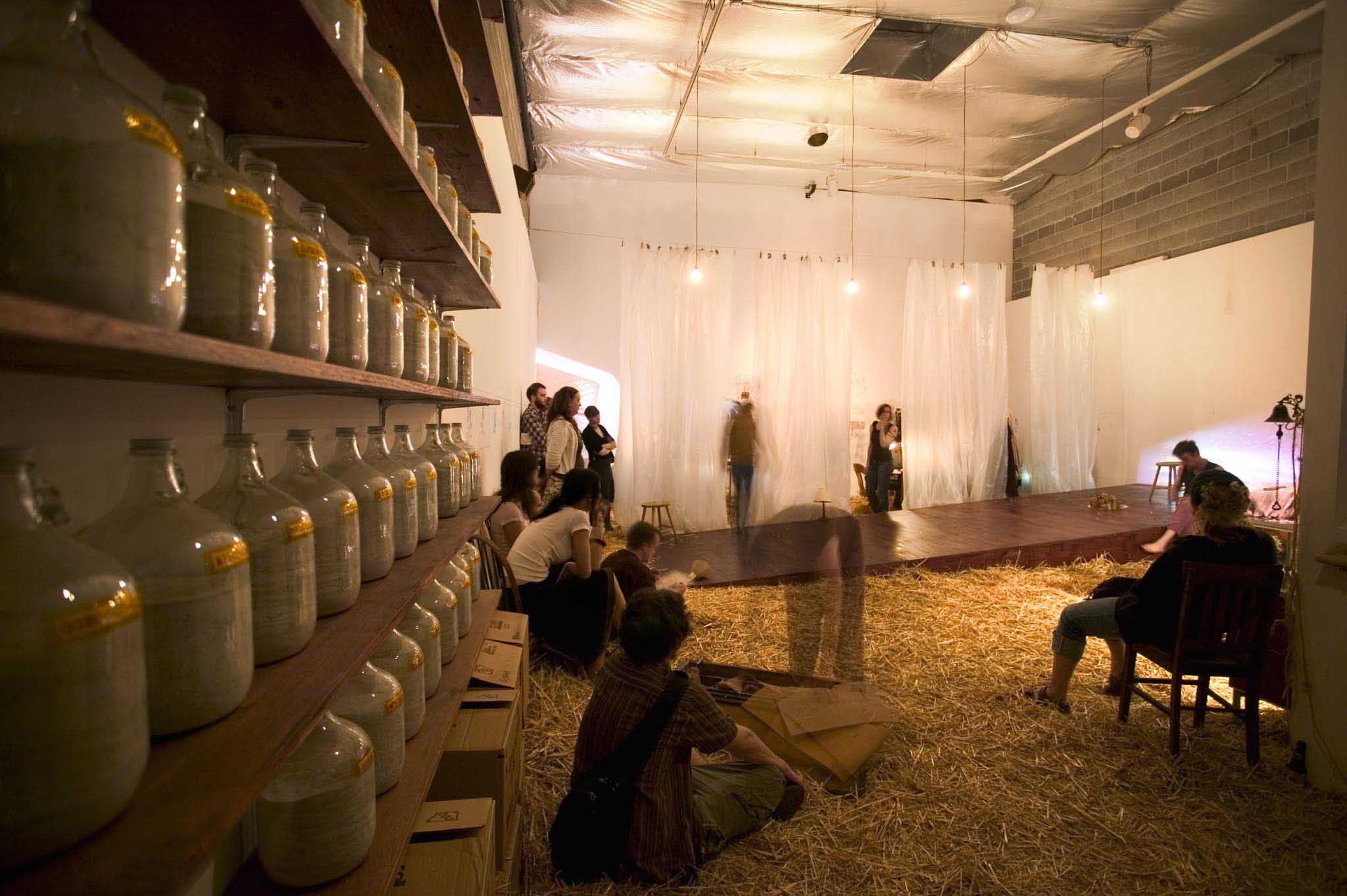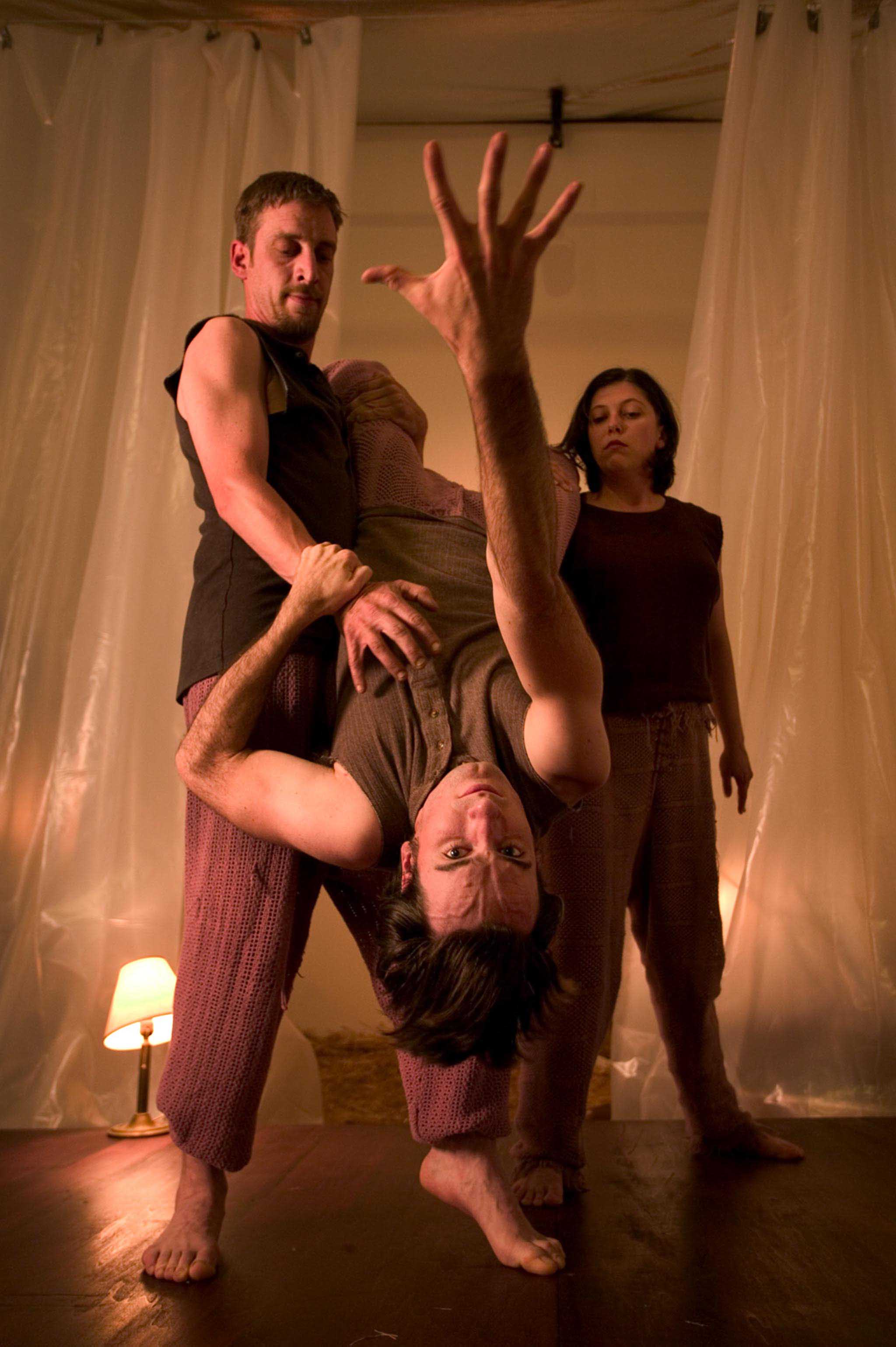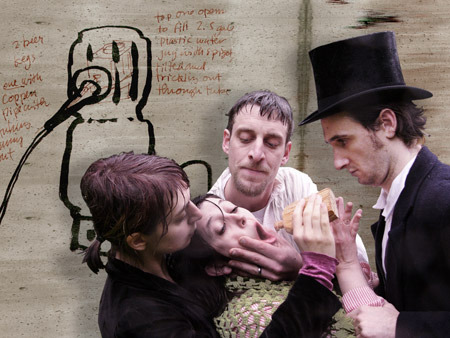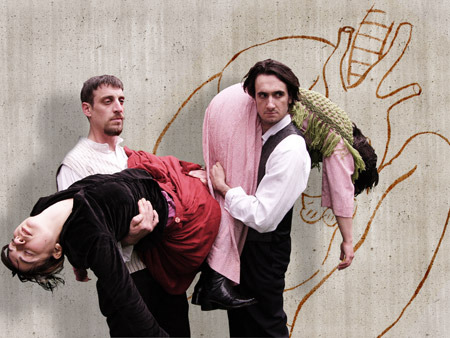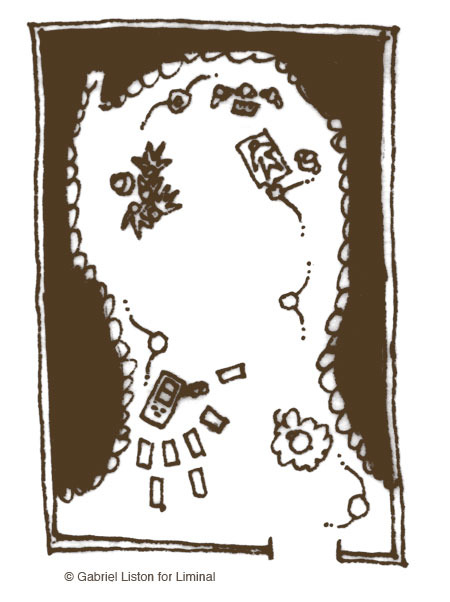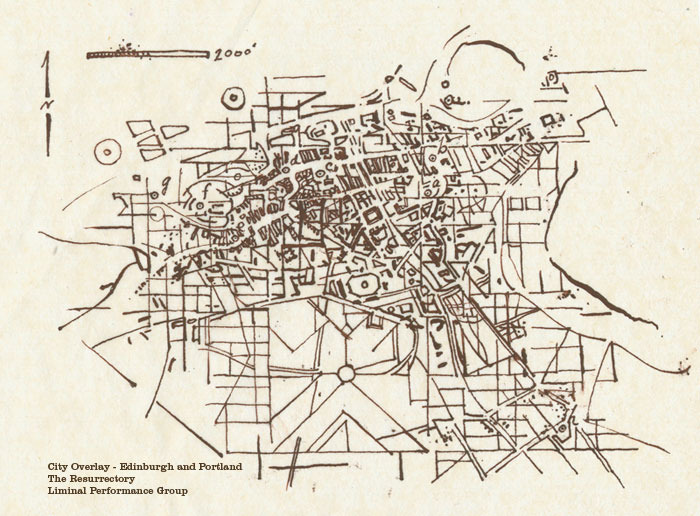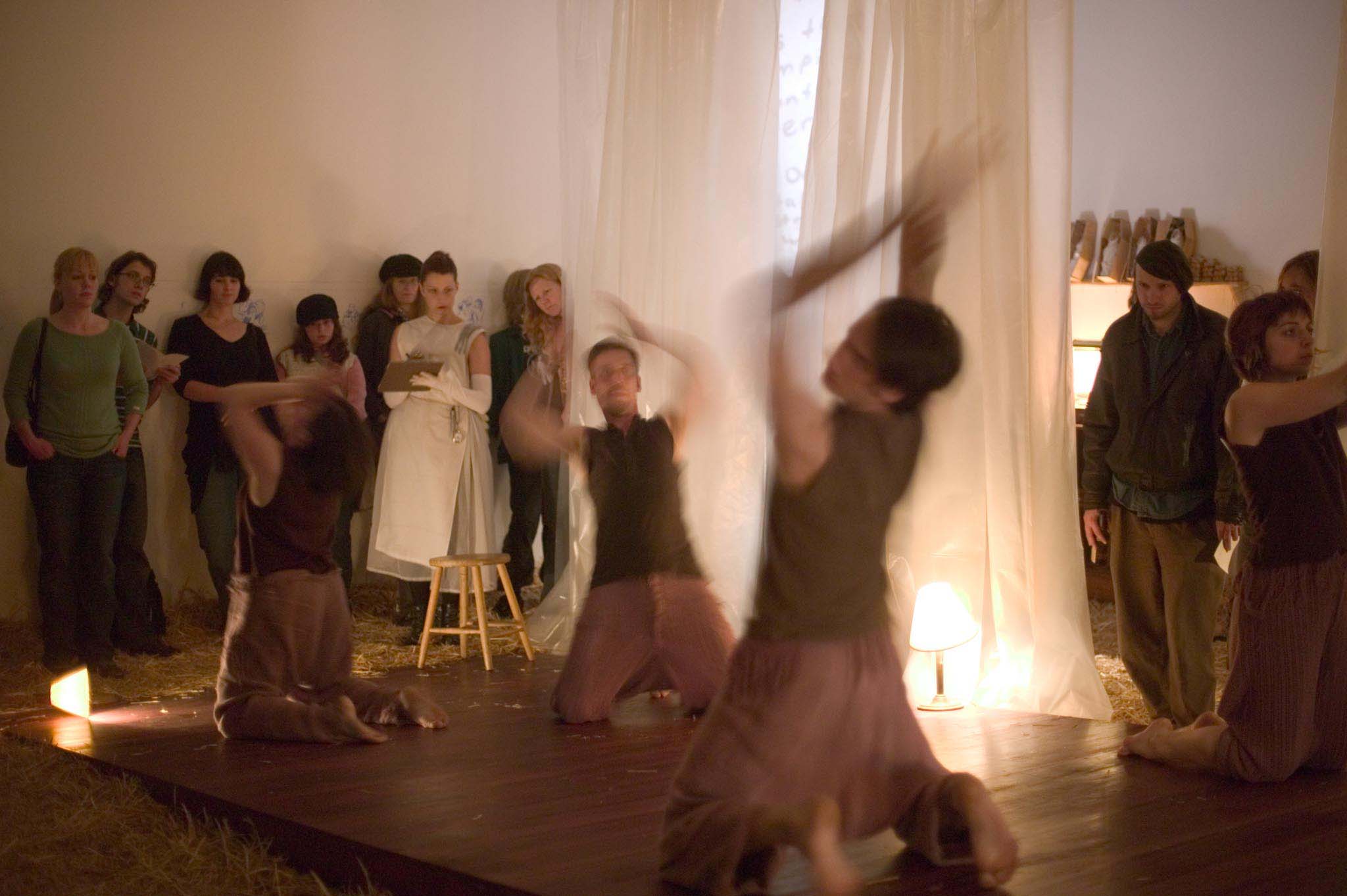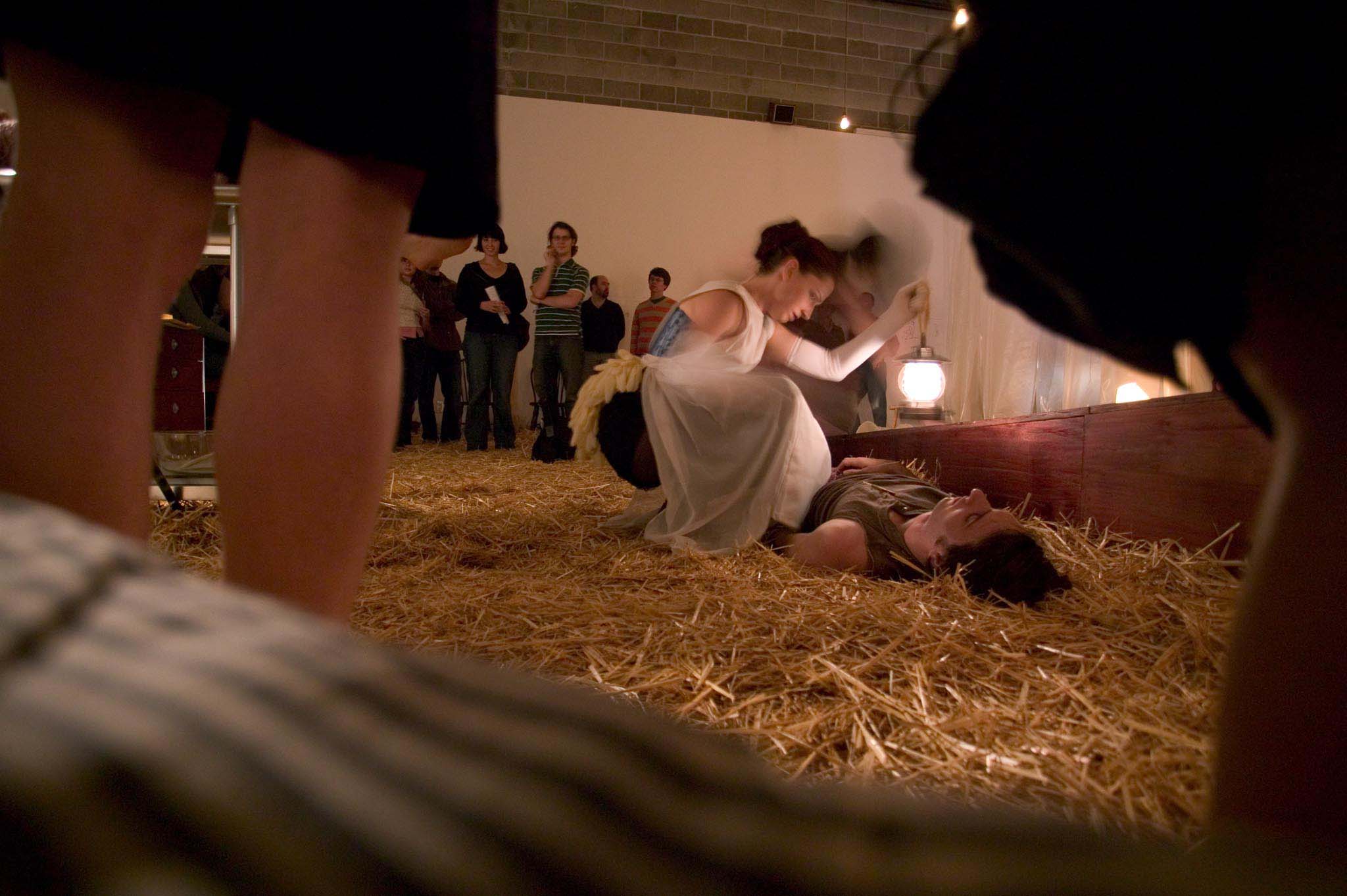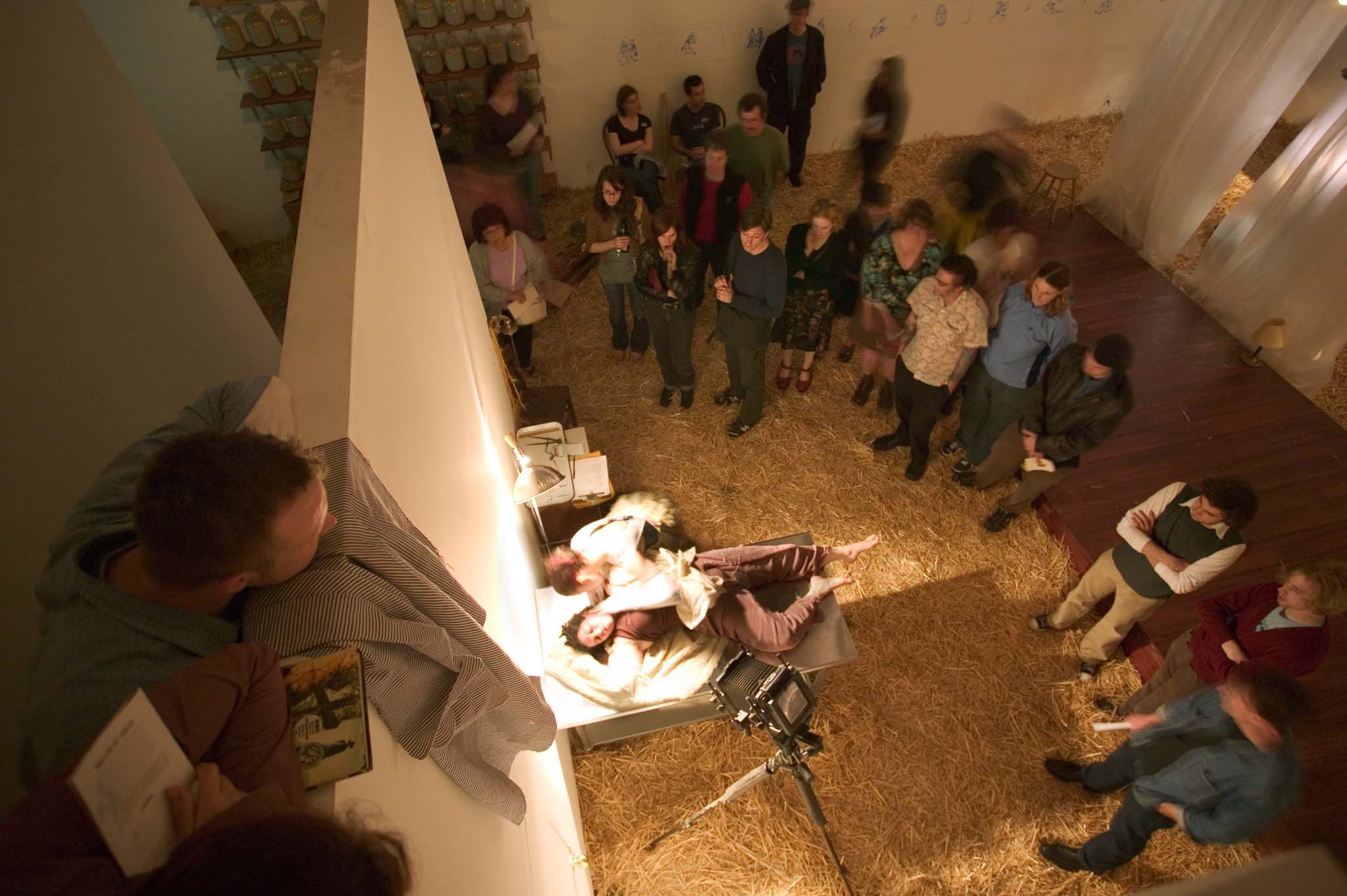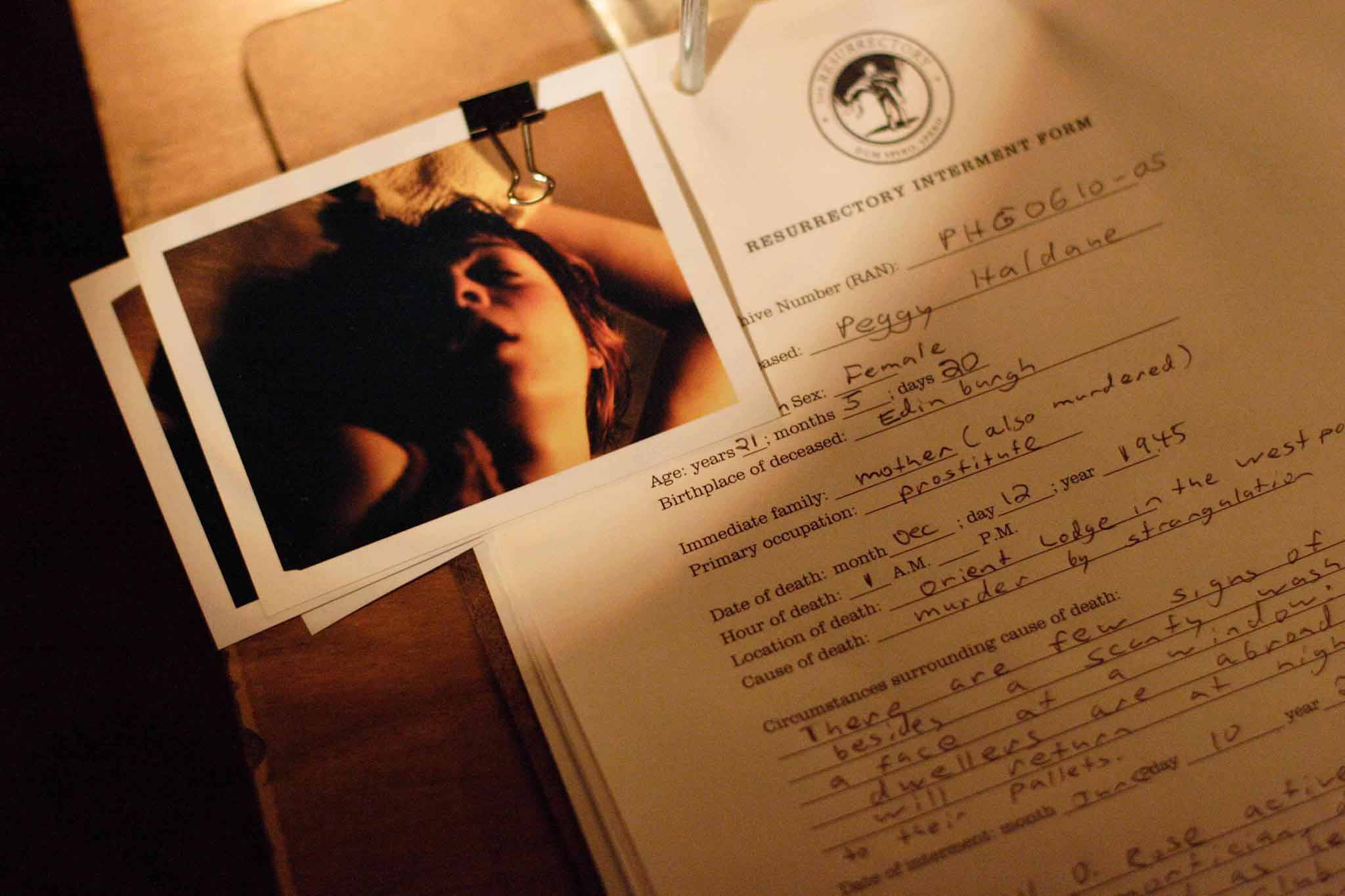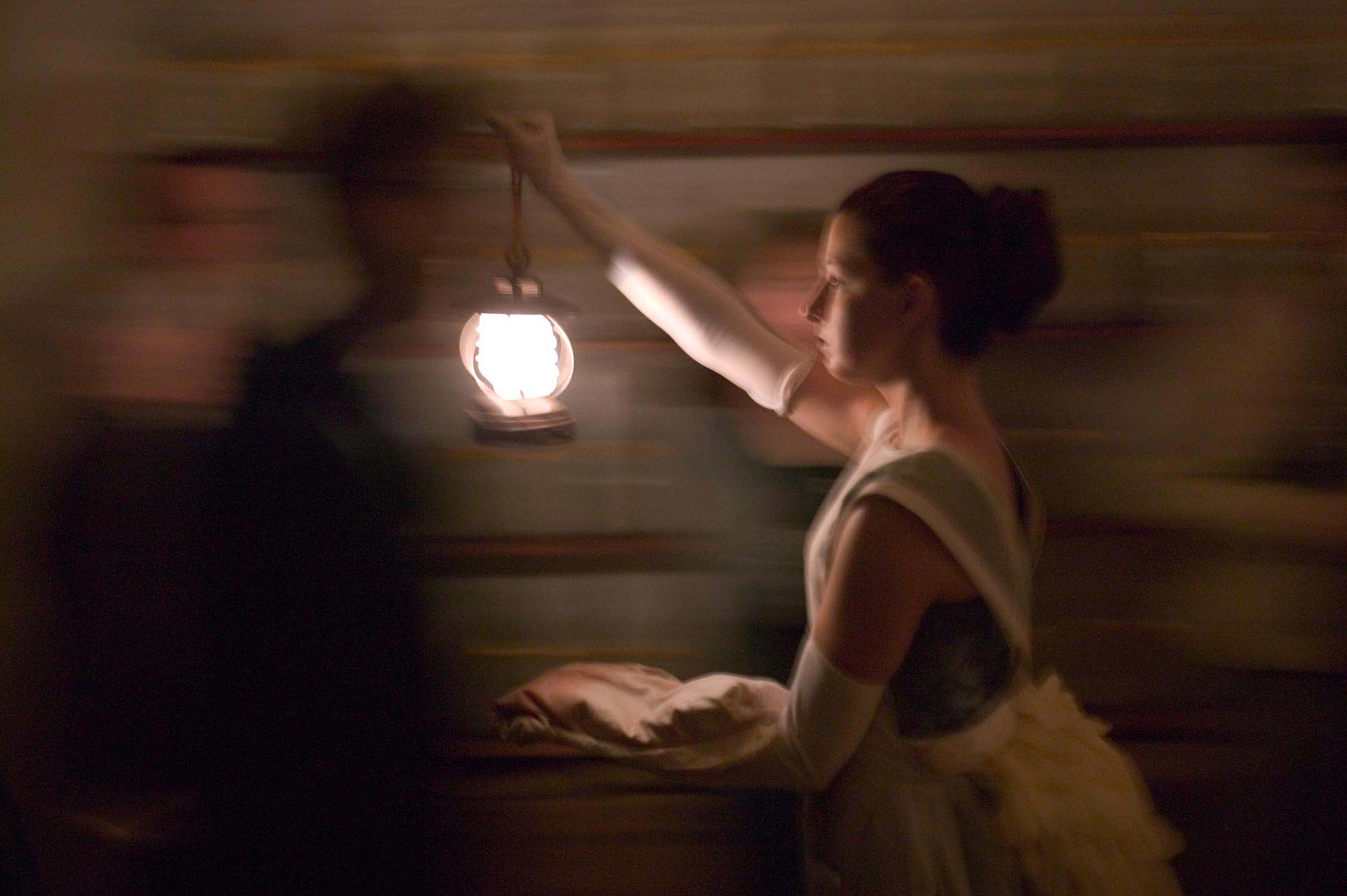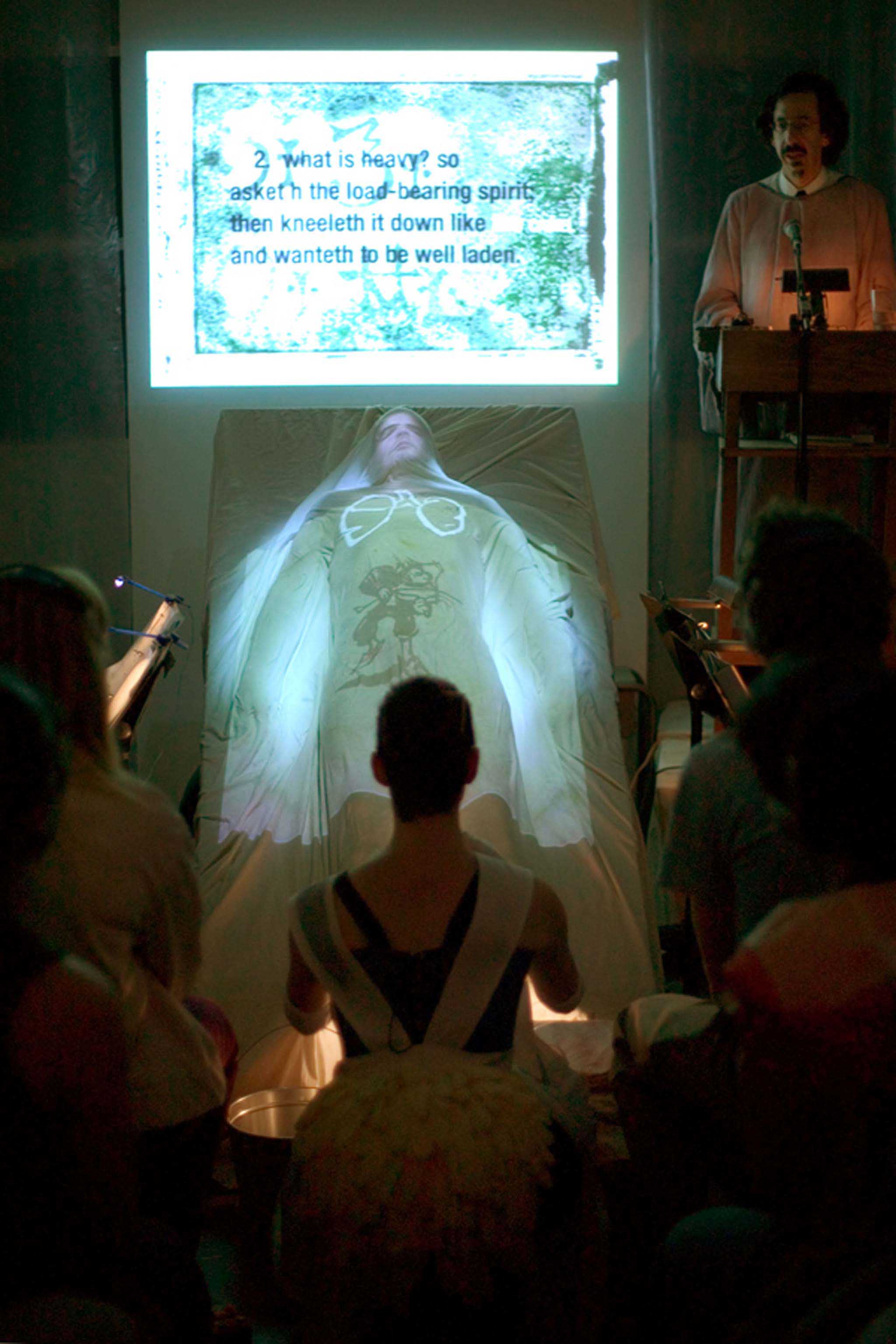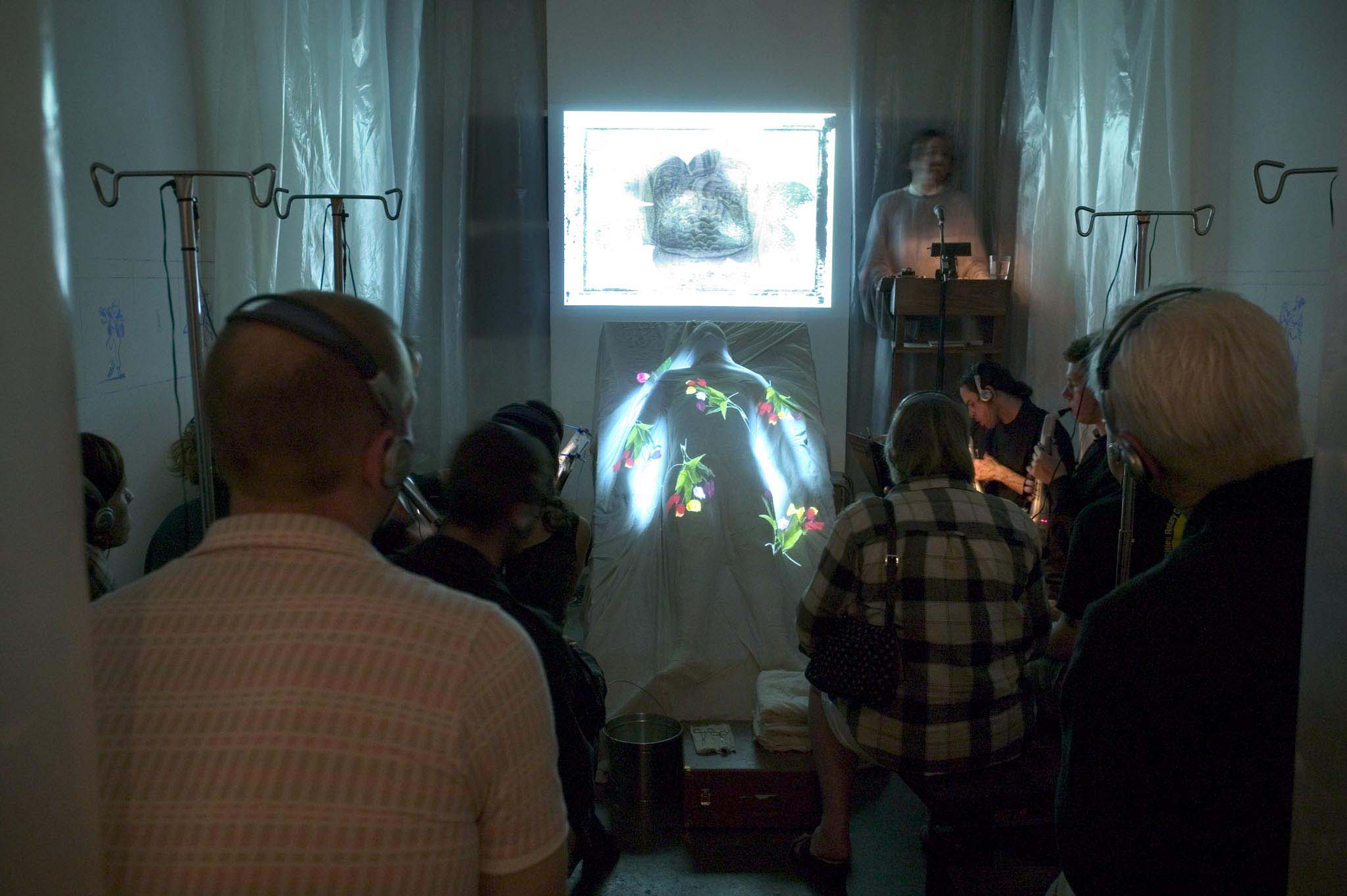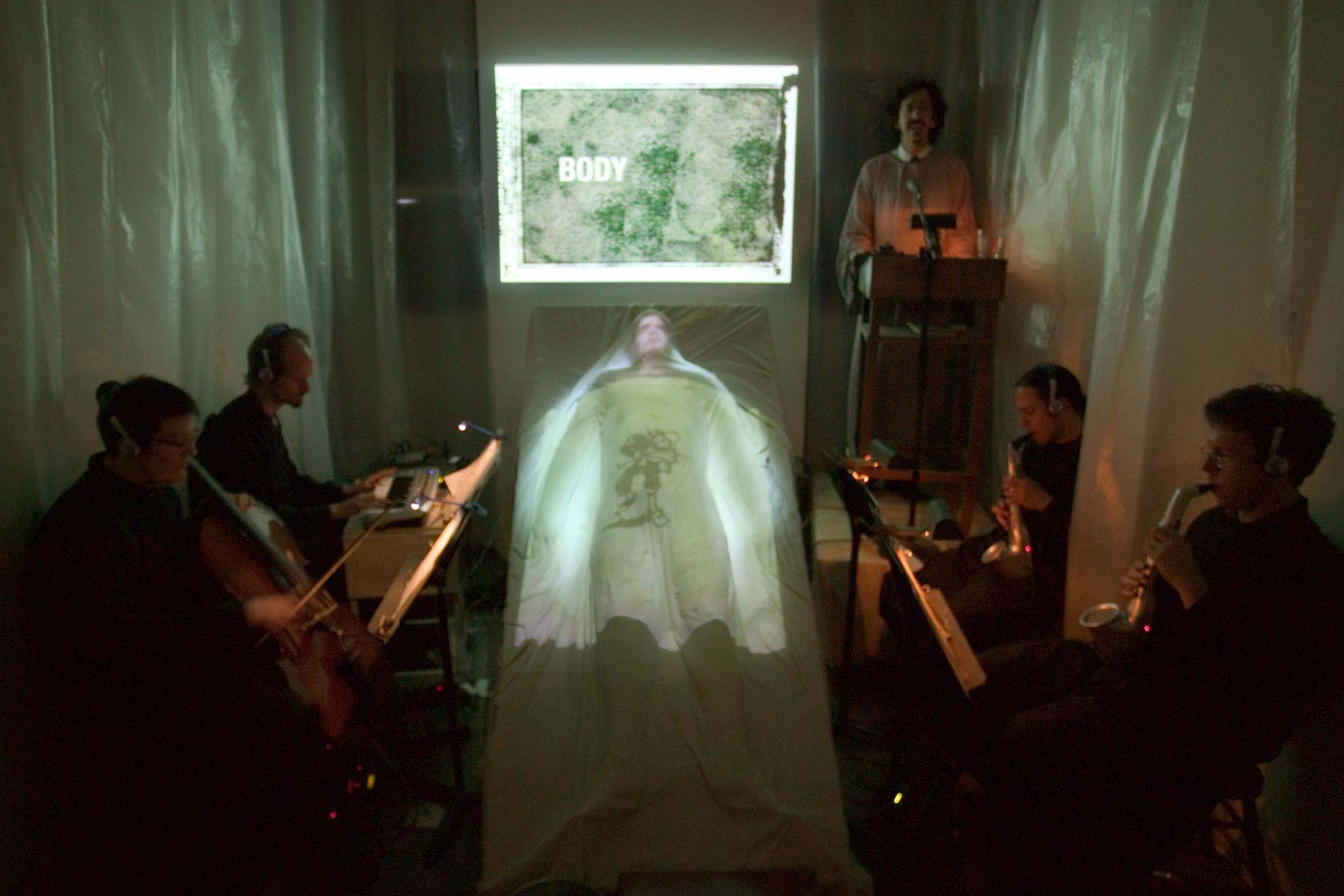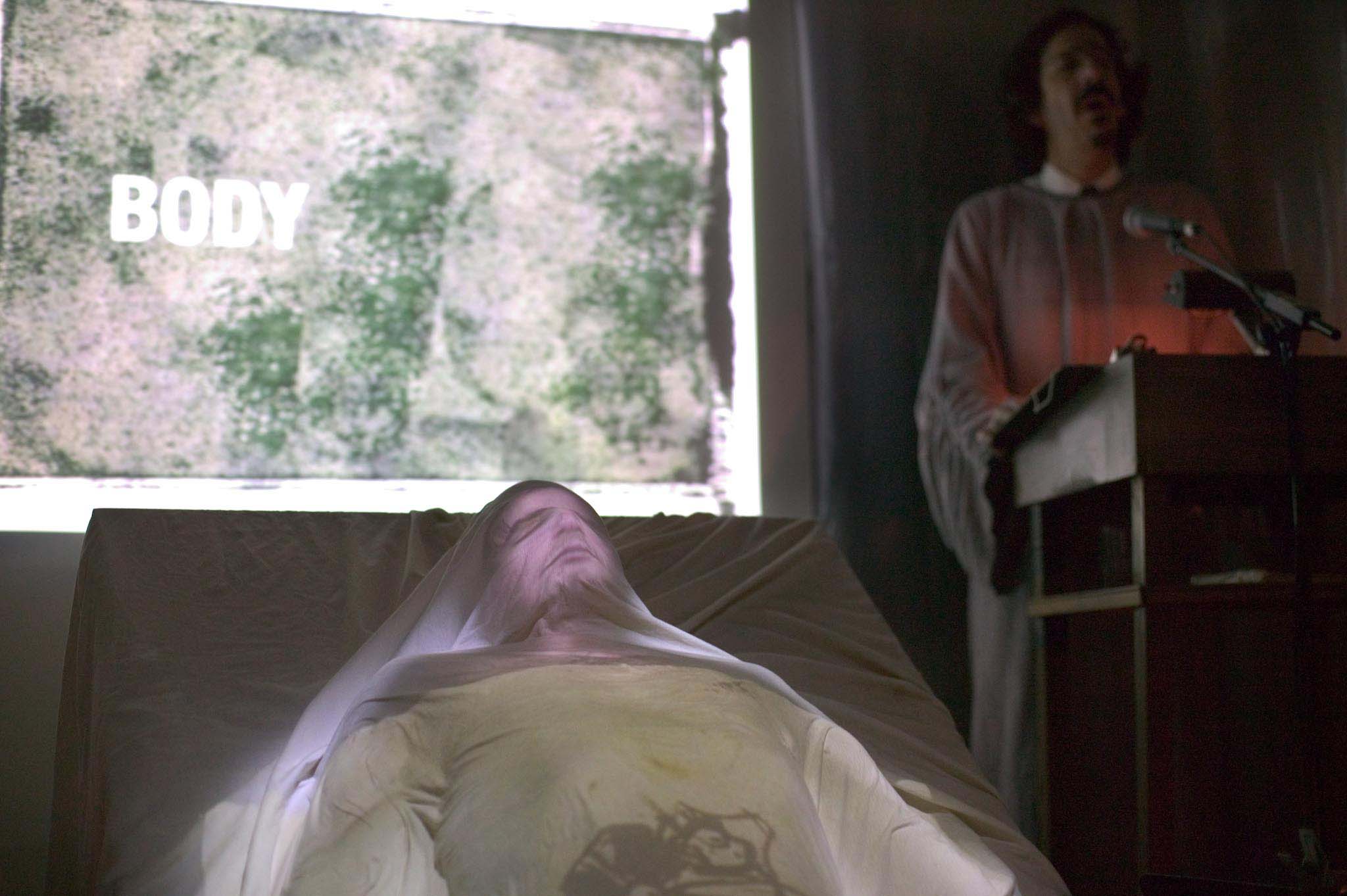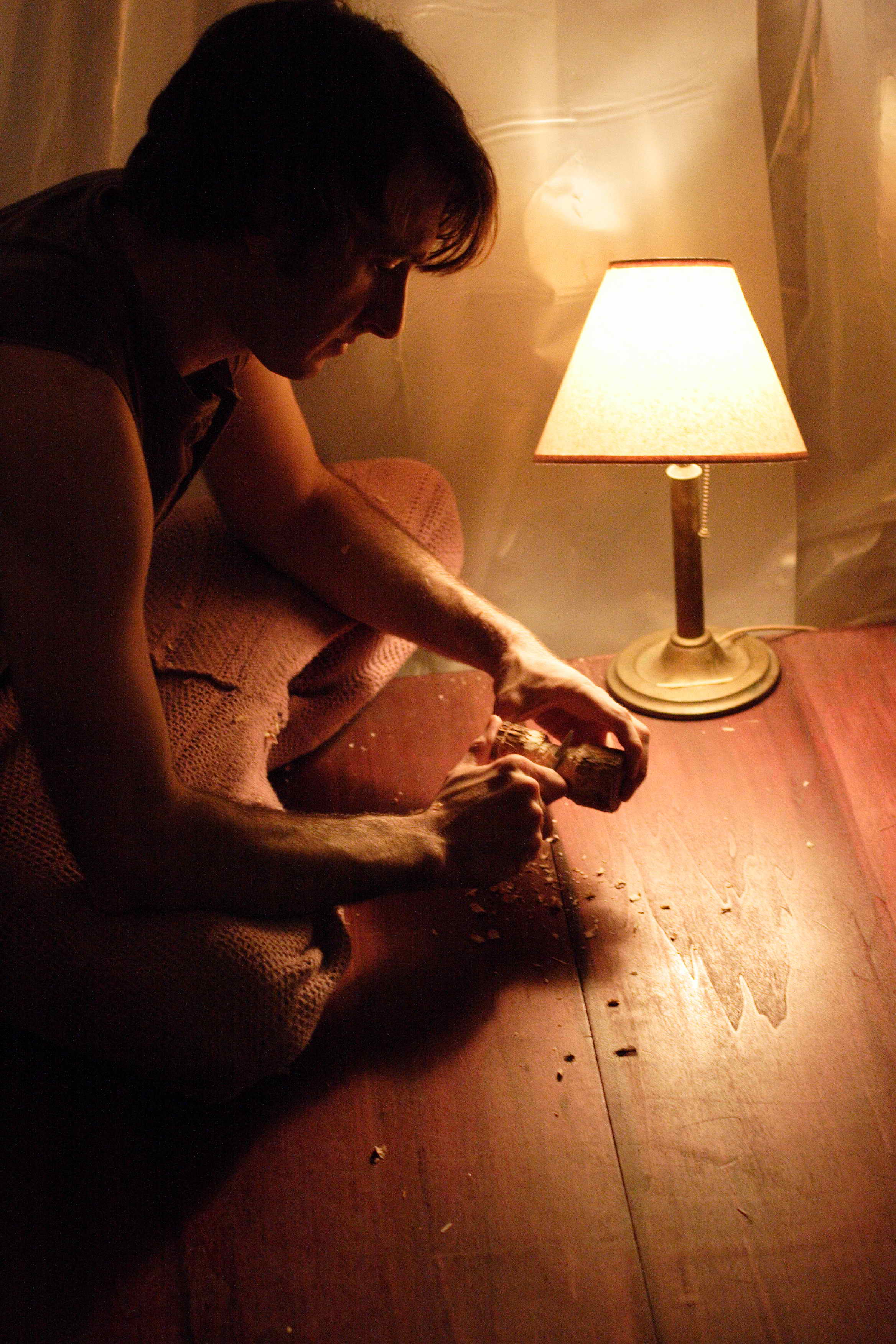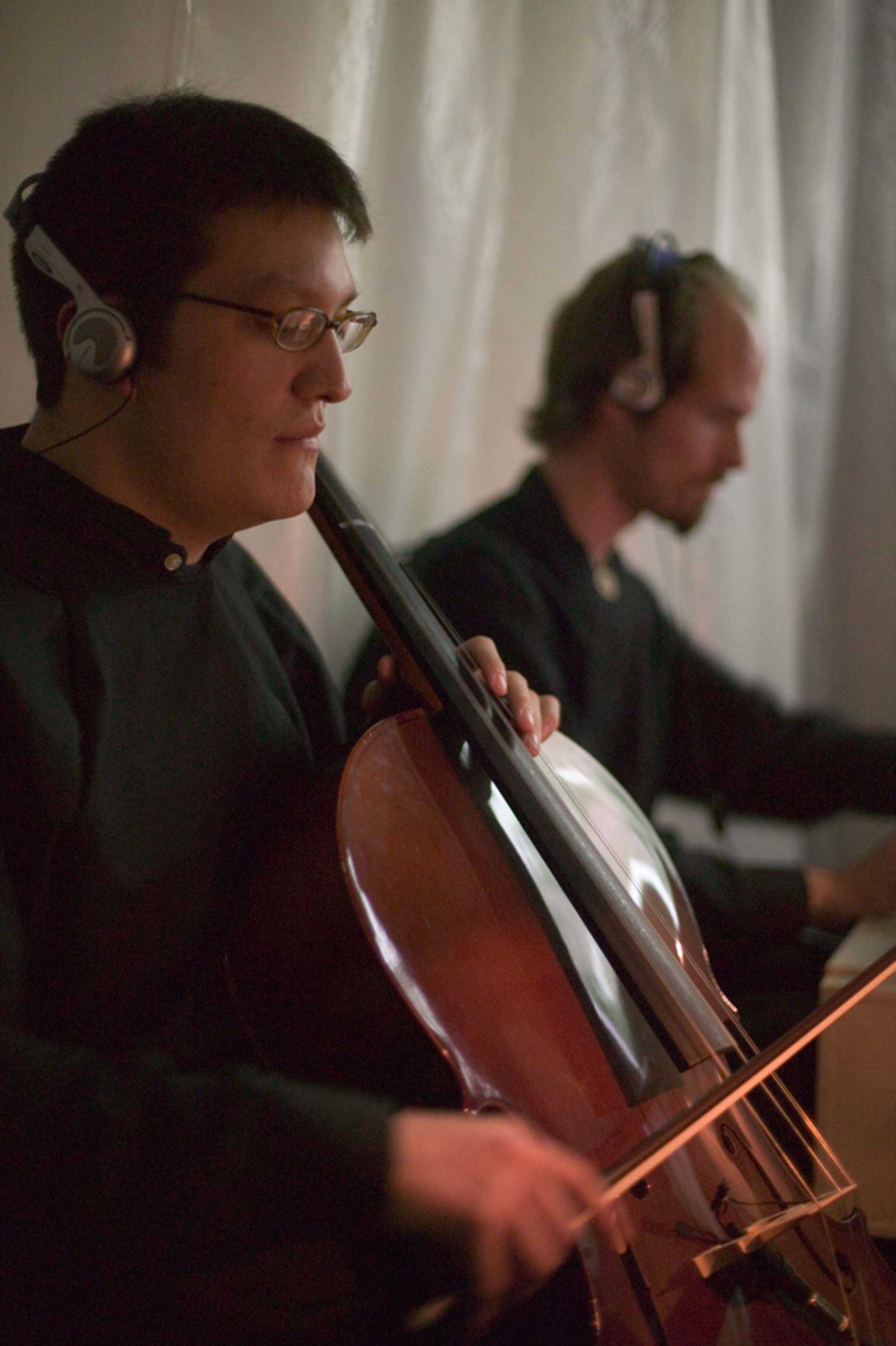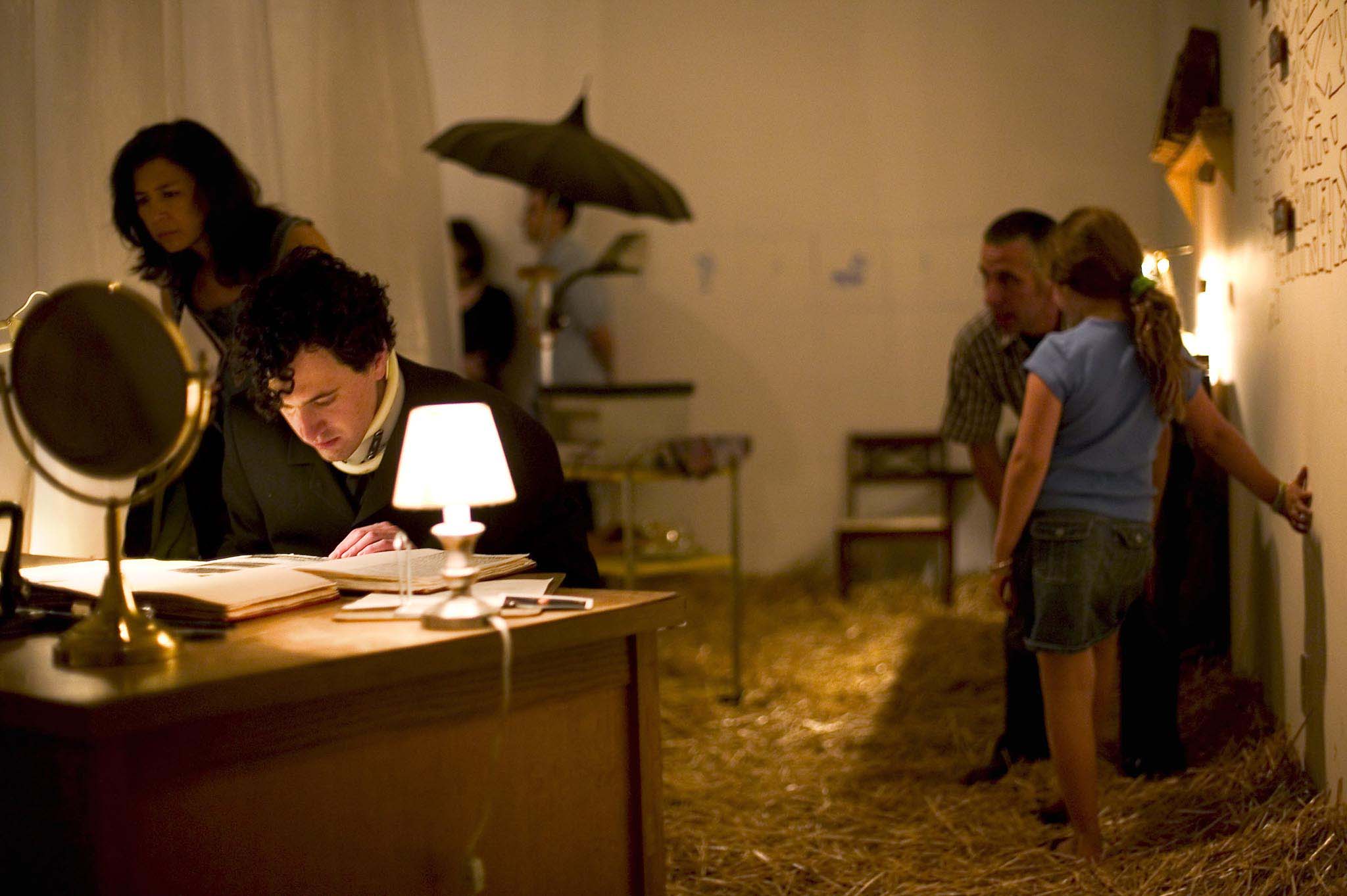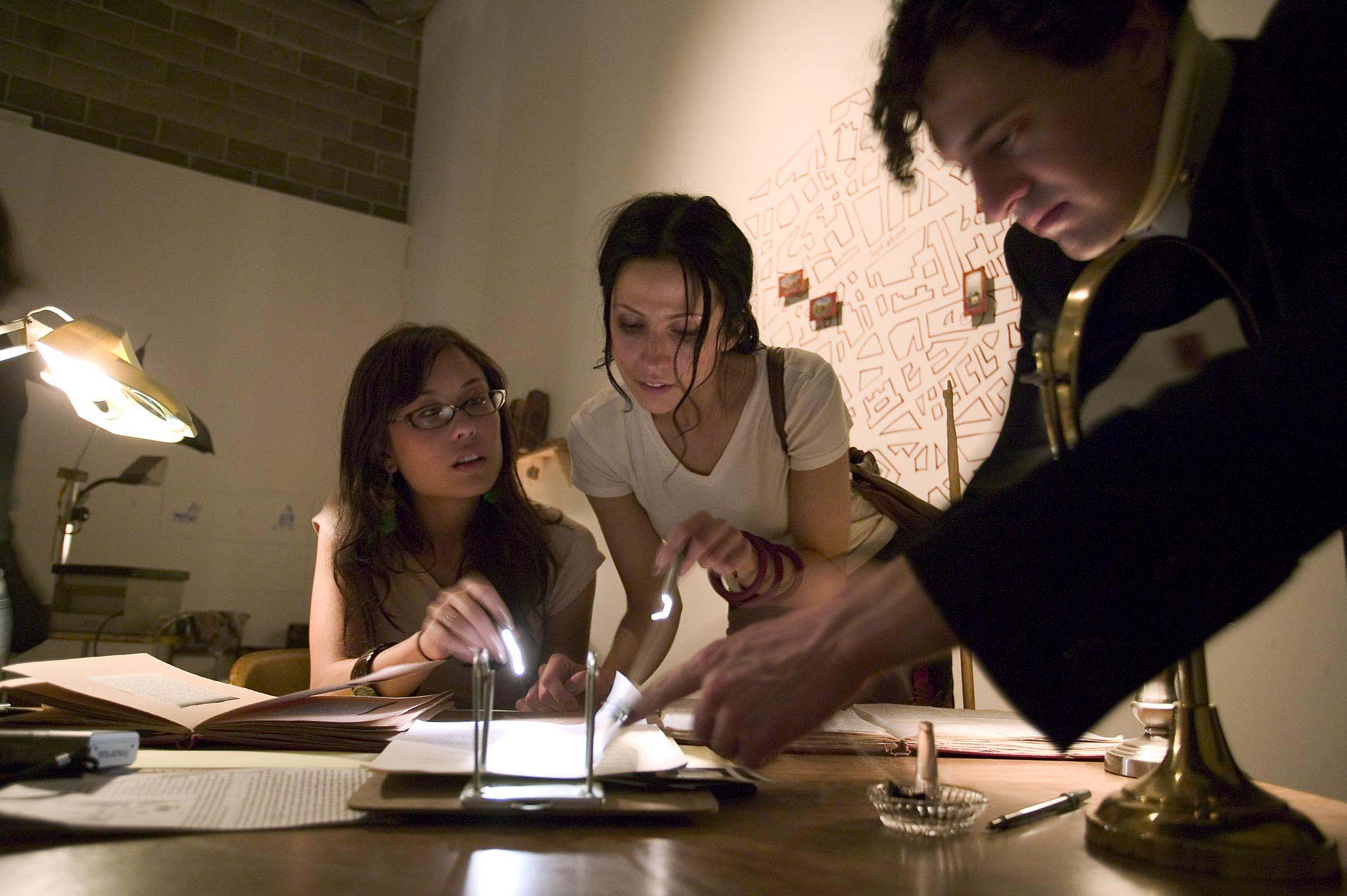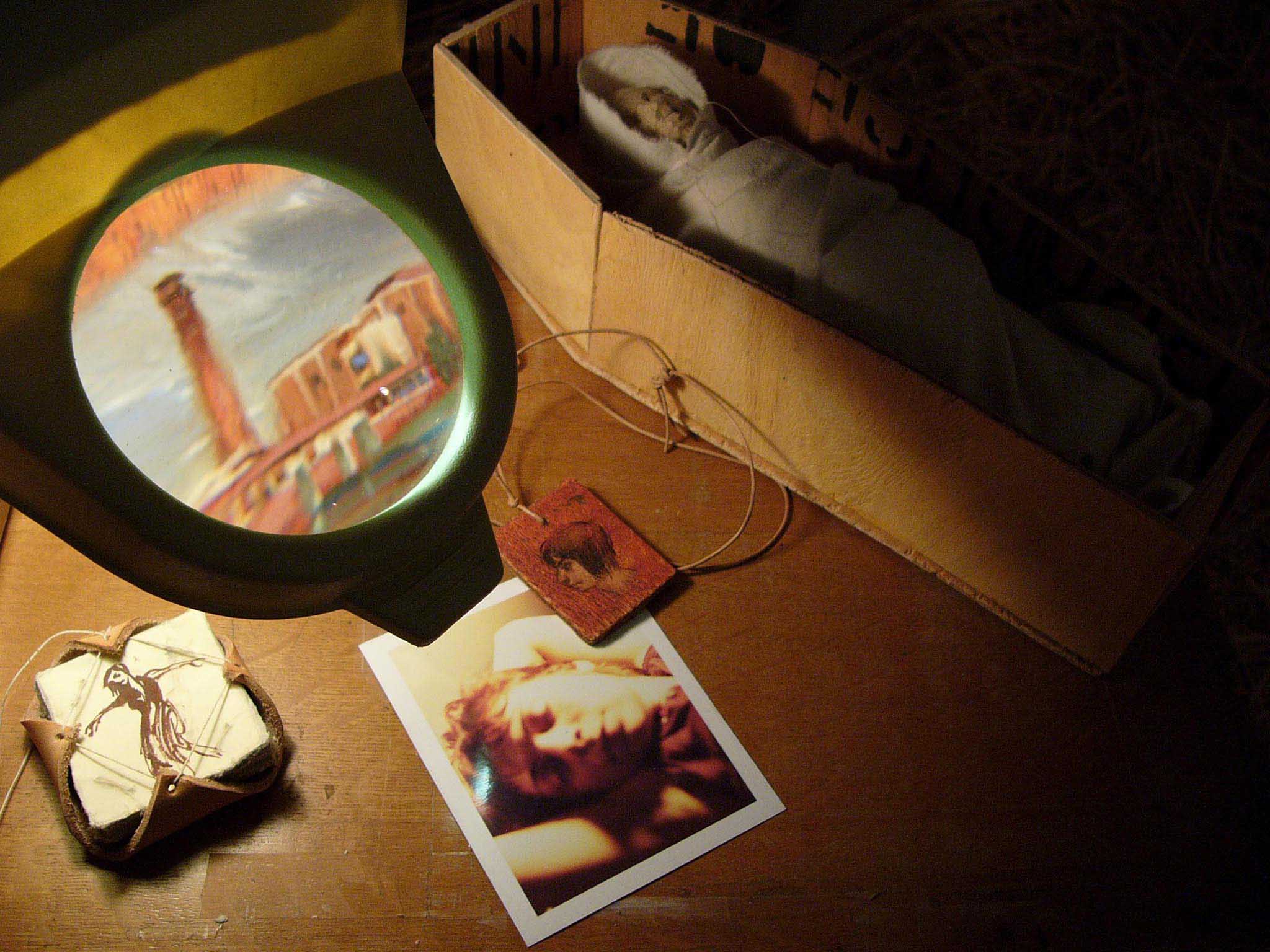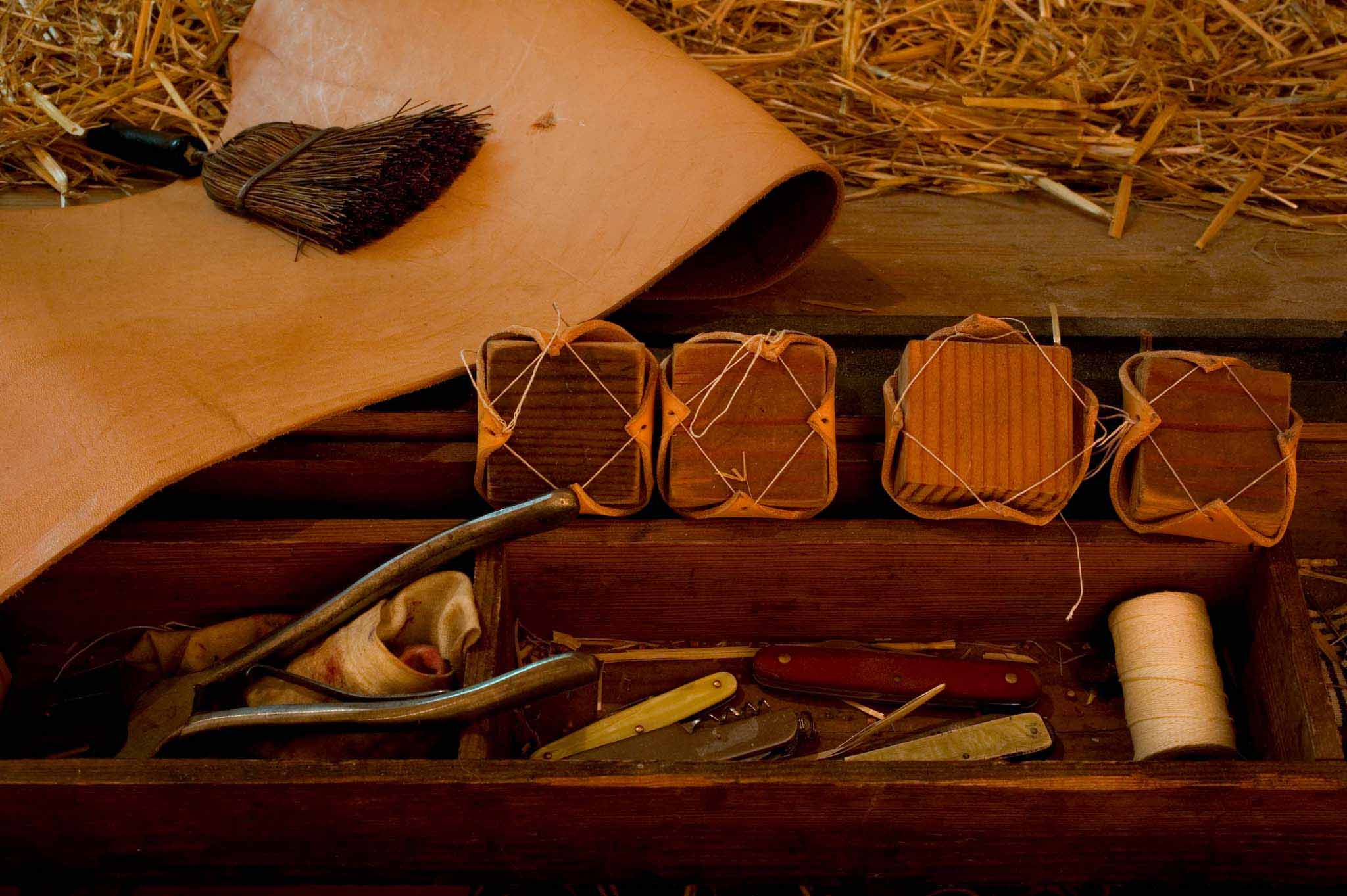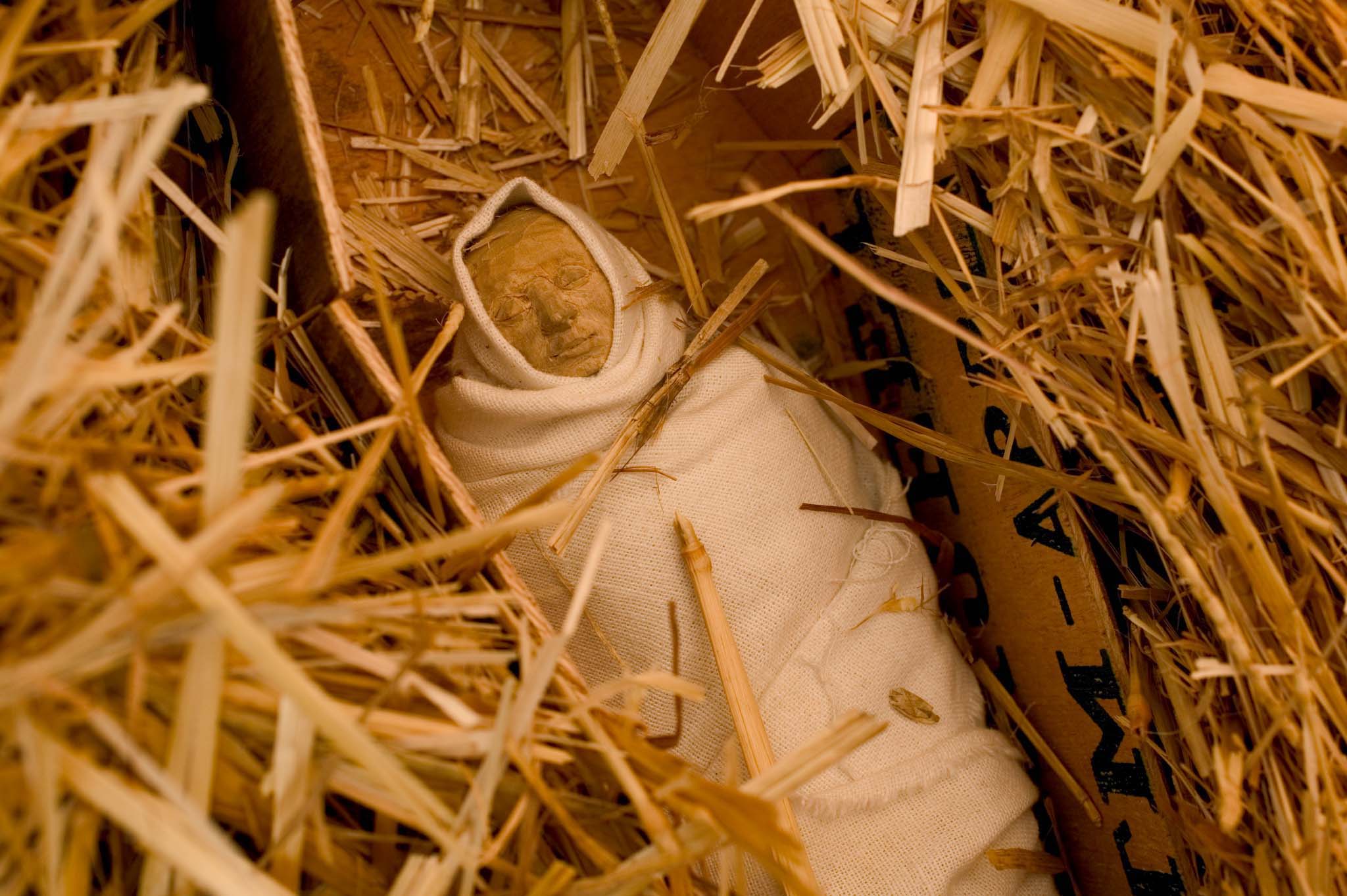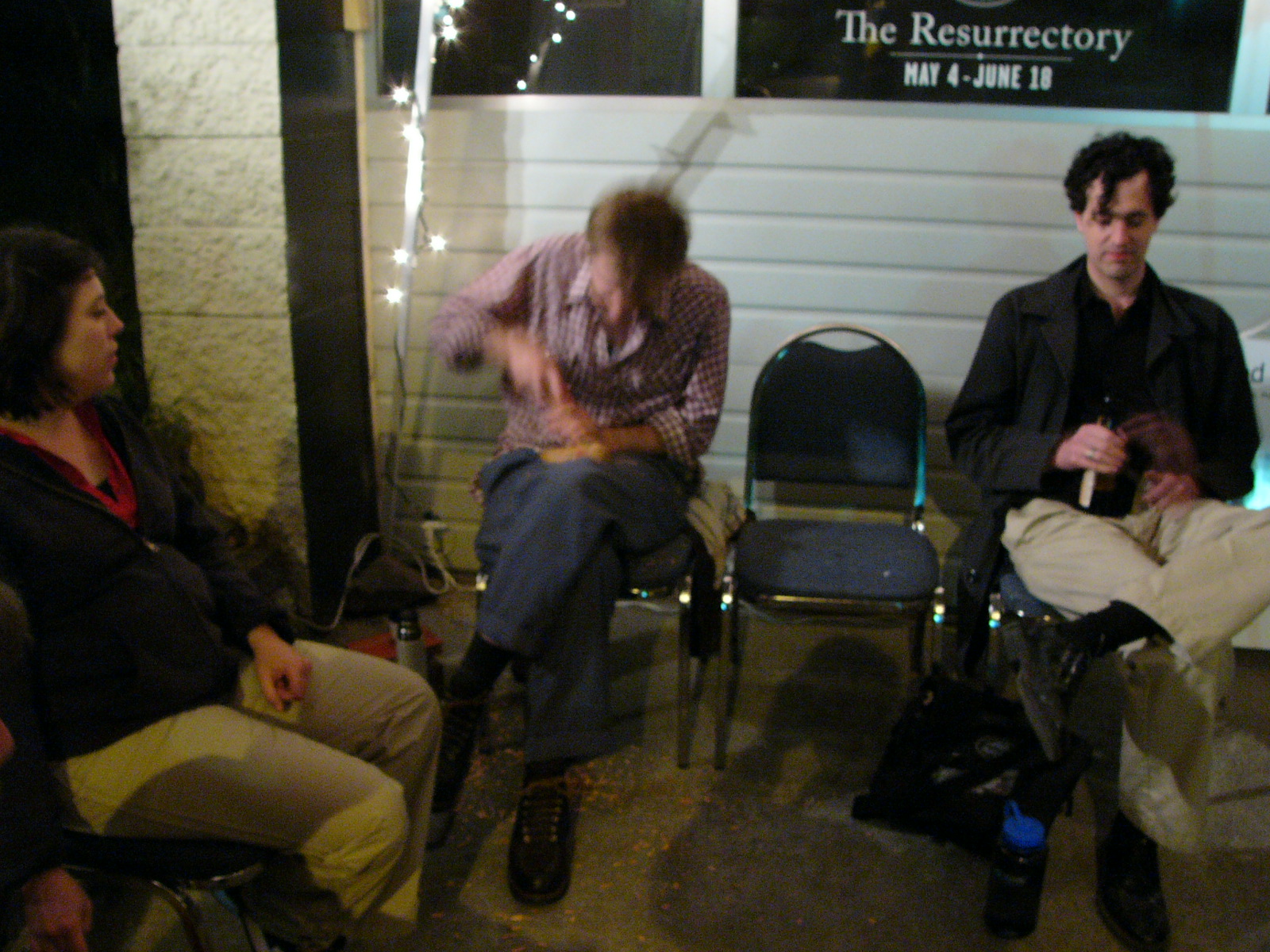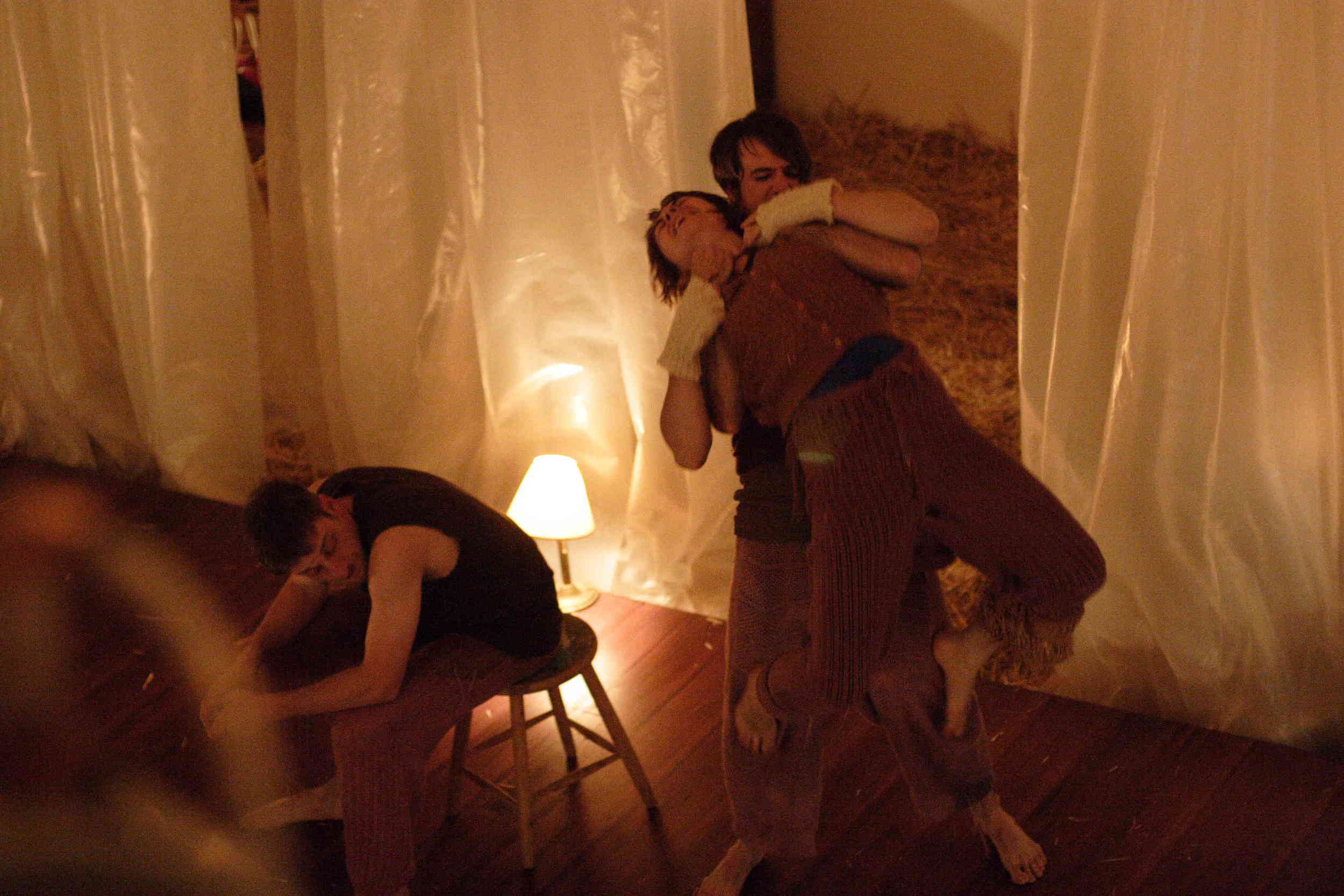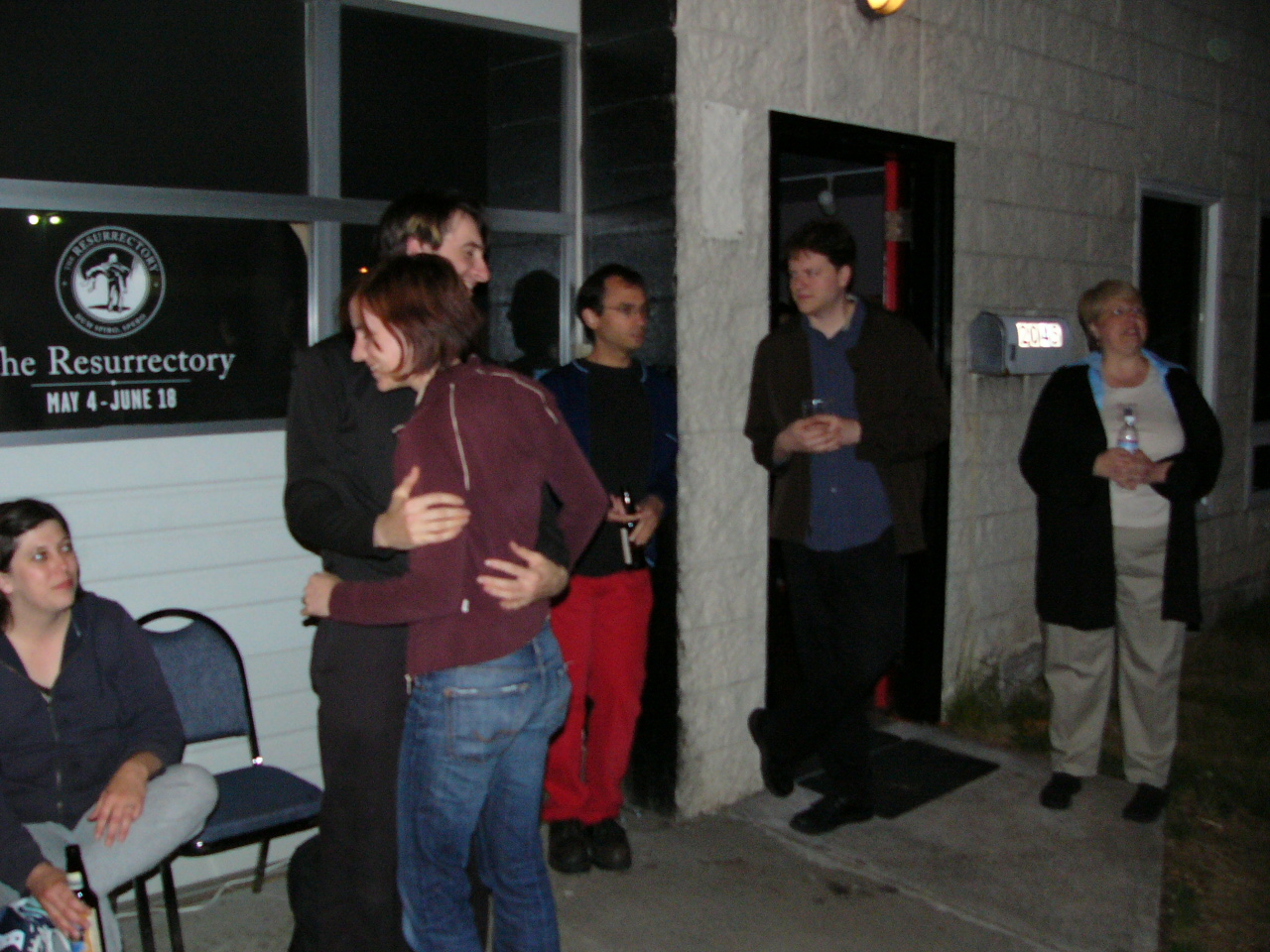

The Resurrectory
The Resurrectory At the Portland Art Center, May-June 2005.
The Resurrectory
The Resurrectory At the Portland Art Center, May-June 2005.
Photos by Basil Childers.
“I always thought that you can make something that appears to be functional, but when you try to use it, you can’t figure out what its function might be. And that’s in the end what the function is, for you to figure out what to do with it.” — Bruce Nauman
The Resurrectory was a live action facility created by Liminal Performance Group to investigate the science, spirituality and commerce of death (both real and fictional). However, the actual function of the Resurrectory was only known to those who worked in it. To the visiting observer, the meaning of this macabre performance, musical lecture, museum of artifacts, and collection of oddities may never be completely clear. It was a puzzle for the mind and senses. The Resurrectory layered romantic views of the human body as a sacred object, with materialist views of the body as a scientifically explained system.
A central component of the Resurrectory was the reenactment of the infamous Burke & Hare case of 1827-1828 in Edinburgh, Scotland. While in operation, Resurrectory staff re-presented the murders of Burke & Hare's nine victims in order to learn more about what motivated their demise, how they literally died, and how their bodies became employed in the service of modern medical science. At the same time, an anatomist and four digital musicians presented an anatomy theatre lecture to describe the physical (and metaphysical) process of death with a three-dimensional film.
The Resurrectory was divided into three areas:
The Collections
An archival space filled with specimens, records, and antiquated objects. A coroner seated at a high table occupied this space and catalogued the Resurrectory staff's inquiries.
The Operating Theater
This space was evocative of a nineteenth century anatomical operating theatre, complete with lecture podium and dissection table supporting a surrogate cadaver created with projection-mapped video and light onto cast of a human body. An anatomist seated near the corpse sang a cryptic lecture-eulogy with the aid of a small ensemble of live musicians who could only be heard by wearing one of several sets of headphones available in the rows.
The Inquest
The inquest took place on a long raked stage where performers re-enacted the Burke & Hare murders based on court transcripts. As the scenes repeated in patterns, their actions evoked a repetitive dance of violence.
Press
Artweek, July/August 2005, Vol. 36, issue 6
Portland Mercury, June 2, 2005
The Oregonian, May 13, 2005
Willamette Week, May 11, 2005
Portland Tribune, May 5, 2005
Portland Mercury, May 4, 2005
Project collaborators included:
David Abel as the anatomist and lecturer
The Parametric Orchestra
Jenny Anderson, costume designer
John Berendzen, sound and media director
Jim Blashfield, video and light designer
Amanda Boehelheide, movement development
Jacob Thomas Coleman, inquest actor
Filemon Gemil, resurrectory lobby gallery
Kollodi, installation design
Gabriel Liston, visual and art designer
Georgia Luce, installation design, inquest actor
Jeff Marchant, inquest actor
Frank Marroquin, musician, the Parametric Orchestra
Bryan Markovitz, director
Chris Piuma/The Minor Thirds, resurrectory street musicians
Alex Reagan, writer, collections reporter
Kate Sanderson, inquest actor
Madeleine Sanford, resurrectory attendant
Christoph Saxe, illuminationist
The Resurrectory was funded with support from the Flintridge Foundation, the Portland Art Center and Liminal’s individual donors.
